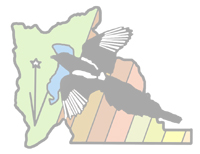|
March
2022
Contents
Monthly Meeting
Upcoming Field Trips
Bird of the Month
Special 2020
Challenge Report
Field Trip Reports
|
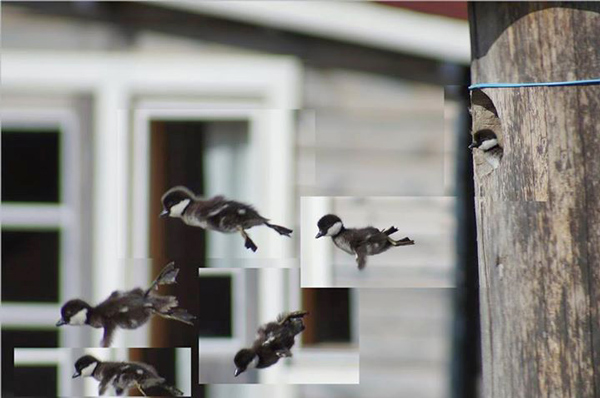
Young Common Goldeneyes leaving their nest.
by Eero Mustonen ©Eero Mustonen |
MARCH UCB MEETING:
Thursday, March 24th, 7pm via Zoom.
Nesting Ecology of Common Goldeneye and other cavity-nesting waterfowl in
interior Alaska, a special presentation by Riley Porter, graduate student at
Mississippi State University. Riley is going to talk to us about his work with
ducks in Alaska, what they hope to learn from his research, and some of the fun
experiences and challenges he’s had doing bird research in wild and remote
places.
The Zoom link and passcode will be sent out via the
UCBirders email the week before our meeting. Hope
to see you all there!
FIELD TRIPS:
(Please bring walkie talkies set to 5-0)
March 5,
2022 (Saturday)
Diamond Fork Canyon
Meet at 9 am at the Spanish Fork Chevron on Powerhouse
Road (3601 E Powerhouse Rd, Spanish Fork, UT 84660)
at 9:00 am.
We will drive up to Diamond Fork and see what birds we can find. We should
be done around noon.
March 26,
2022 (Saturday)
Carbon and Sanpete County
SATURDAY FIELD TRIP CHANGE!!!!
UPDATE!!! I As of this past weekend the Emma Park Road was still locked. I
also just talked to Bryan and we are worried about ice and snow at Scofield.
So we are going to meet at the Spanish Fork Chevron (3601 E Powerhouse Rd,
Spanish Fork, UT 84660) at 7 am. We will then drive down to meet Bryan at
the Chevron in Fairview just as you come into town.
Bryan will take us to hus favorite spots in Sanpete County. We will be
pretty close to Sevier County and thought we may as well get our 22 species
there! Bring a lunch.
We do have a couple out of town challenge field trips planned.
The first one is:
May
20-21 2022
Grand and San Juan County
On Friday we will meet at the Swanny Ciy Park 400 N.100 W. Moab at 11 am.
Our first birding spot will be by the Kane Creek OHV parking lot. I usually see
a lot of birds here, hopefully we will get our 22 species for Grand County, if
not we will stop at the Scott S. Matheson Wetlands Preserve and around town.
Please bring snacks, a lunch and water.
Then we will head to Devil's Canyon Campground to set up camp. Or if you want
there are hotels in Monticello and Blanding. I would recommend getting
reservations ASAP.
After setting up camp we can look for birds around the campground.
Saturday we will meet at 8 or 9 am depending on the weather to look for birds
around the campground, drive to Recapture reservoir and if we have time go check
out the Blue mountains. I love this area and I am excited to share it with you
all. My favorite species down here are Acorn Woodpecker, Western Bluebird, Pygmy
Nuthatch, Grace's Warbler and hopefully Red Crossbill! I have also seen
Williamson's Sapsucker, Lewis's Woodpeckers and so many others!
Second field trip:
June 3-4 2022
Washington County
Friday we will meet at 6 am at the Bluff street McDonald's in St. George.
We will drive out to Lytle Ranch. We will spend a lot of time there. Please
bring a lunch and water. After that we will see if we have time to go to the
Gunlock area to look for Common Blackhawk, go to Snow Canyon and Tonaquint
Nature Park.
Saturday we will meet at the Hurricane Walmart at 7 am. From there we will go
straight up Kolob Terrace to Lava Point Lookout to look for California Condors.
We will walk around the area there looking for birds, then drive around to a few
other good spots.
If we have time we will check out Dalton Wash for Rufous-crowned Sparrows and
hit Grafton. Plan on lunch that day as well.
Remember to book your hotels ASAP.
On your drive down Thursday please stop in Iron County to get your 22 species.
My favorite spot is the trail along the river that goes up Cedar Canyon-Lower (aka
Canyon trail) its a ebird hotspot, i also like Canyon Park. I would think you
could find all 22 species in a few hours there.
|
|
|
|
|
|
BIRD OF THE MONTH:
|
|
|
|
|
Mountain Bluebird
(Sialia
currucoides)
Thrush Family (Turdidae), Order Passerines
(Passeriformes)
By
Lynn Garner
States in the US began choosing state
birds in 1927, following campaigns by women’s groups and schools. Two states
eventually chose the Mountain Bluebird (also known at the time as the
Arctic Bluebird) as their state bird, Idaho in 1931 and Nevada in 1967. This
bird is found in both states year around. They are migratory, nesting from
Alaska and western Canada southward to mid-Arizona, mid-New Mexico, and northern
California and wintering from mid-Nevada and southern Idaho south to central
Mexico, and like some other thrushes, their summer and winter ranges overlap.
Often the migration is simply a move to lower elevations. Individuals seen east
of the Rockies are treated as accidentals.
|
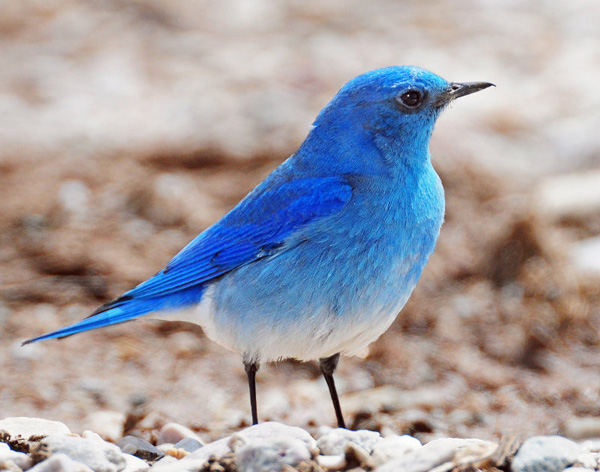
Male, Box
Elder Co.
by Paul Higgins
©Paul Higgins |
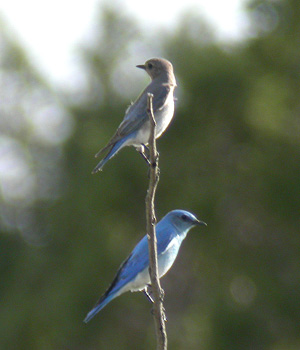
Pair,
Dividend, Utah Co.
by Milt Moody
©Milton G. Moody |
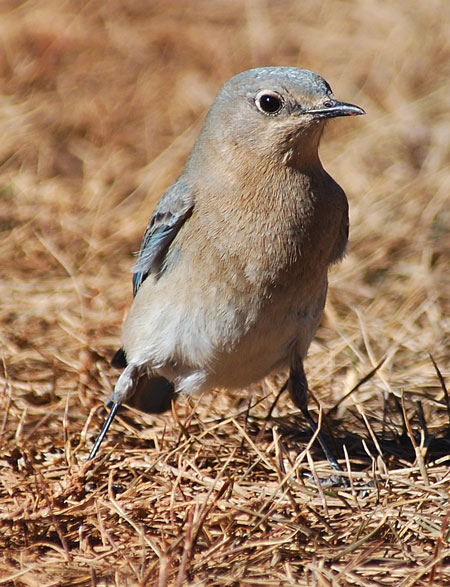
Female, Monticello
area
by Lu Giddings
©Lu Giddings |
The striking light blue coloring of the male makes it one of the most beautiful
birds in the west. The female is more brown or gray, but still has blue in her
wings and back. The birds are about 7 inches long, with a wingspan of about 14
inches and weighing about one ounce. Their call is a soft descending whistle tru-lee,
and their song is a series of low, burry whistles. The alert sound is a harsh,
short chik or chak.[2]
Mountain Bluebirds are cavity-nesters, building their nests in tree hollows and
crevices, often using nests abandoned by woodpeckers; they also readily use
nesting boxes. Most studies of their behavior has been done on populations using
nesting boxes. They typically lay 5 or 6 light blue eggs and raise two broods
per season.[1] The male chooses the nesting territory, but the attracted female
chooses the actual nesting site (rather than choosing the male) and does most of
the nest building. The male brings food to the female during the incubation
period of about 14 days and both parents feed the young during the next three
weeks or so before fledging. Pairs remain monogamous.[3]
Mountain Bluebirds prefer nesting in high (5000+ feet) mountain grasslands or
sagebrush with scattered trees and bushes, and where there is less competition
for nesting places. I was told years ago that Mountain Bluebirds used to nest in
Utah Valley, but when European Starlings arrived in the mid-1930s the bluebirds
moved to higher elevations. In winter, they prefer pinyon-juniper woodlands but
will occupy any open shrubland, grassland, or agricultural fields. They often
hover over open ground seeking food, or will hunt from a perch like a
flycatcher. Their diet consists mostly of insects and some seeds, but fruit is a
major part of winter diet.[3]
It appears that the major predatory threat to Mountain Bluebirds comes from
accipiters and Kestrels, and their nests are sometimes vulnerable to squirrels
or other animals that can access the cavities. The oldest known Mountain
Bluebird was 7 years old. In regard to conservation, the population of Mountain
Bluebirds is increasing; population estimates are currently more than 5 million
individuals.
References
[1] National Audubon Society, Birds of North America, 2021, New York:
Knopf
[2] Sibley, Sibley Birds, V2 App.
[3] All About Birds and various other web sites.
[See
past Bird of the Month articles]
|
|
Field Trip Reports
|
Millard County- Snow Goose Festival fieldtrip.
26 February 2022
by Suzi Holt
|
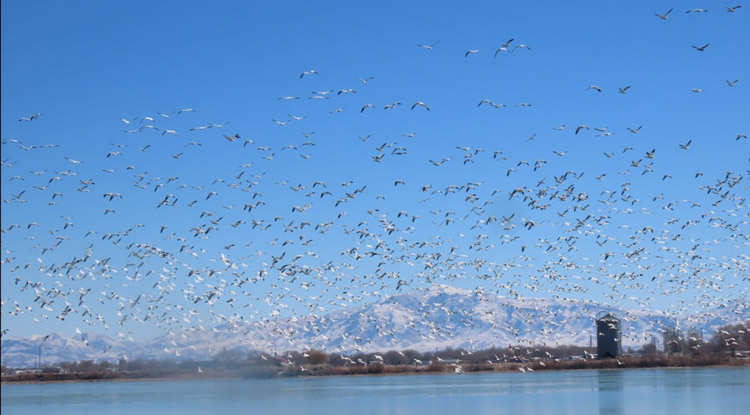 |
 |
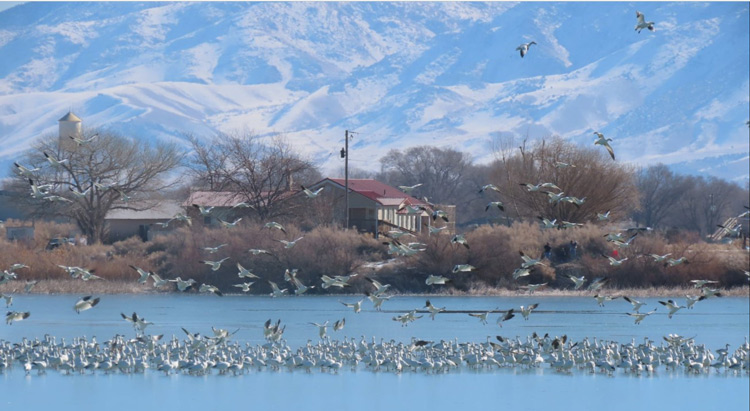 |
 |
|
|
We started our trip
meeting at Payson Walmart at 8 am. I arrived at 7:45 and noticed I was in my
slippers, so I ran home to get shoes. It was 5° degrees BRRR!
|

5° degrees |
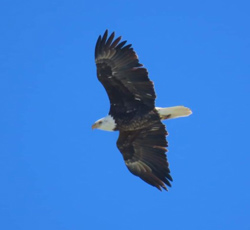
Bald Eagle |
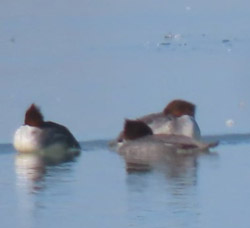
Common Merganser |
|
We drove down to Nephi and headed west to Delta through Leamington and
Lyndell, somewhere in that area my car was saying -5° yikes!
Just past the Millard County sign we saw a few Black-billed Magpies,
Common Raven, 3 Bald Eagles, European Starlings and Eurasian Collared
Doves, a Red-tailed Hawk, 4 Tundra Swans, Northern Pintail and
Mallards.
From there we flocked this way to Gunnison Bend Reservoir. The Snow Geese
had not arrived so we drove around Sherwood Shores. We found Euraisian
Collared Doves, European Starilings, Canada Geese, Common Merganser,
Redhead, Song Sparrow, House Sparrow, Spotted Towhee, Ring-billed Gull,
Red-winged Blackbird, Green-winged Teal, Ring-necked Ducks and then a
huge flock of Snow Geese flew in.
|
|

House Sparrows
|
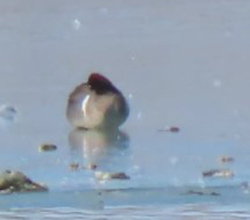
Green-winged Teal |
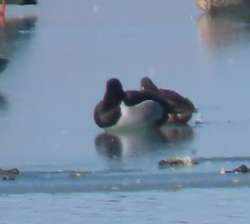
Ring-necked Duck |
|
We raced over to one of the viewing
areas and watched them land on the ice and water. What a sight. I will never
get tired of all that sound and sight!
We set up our scopes and began to search for Ross's Geese amongst the Snow
Geese. I estimate about 3500 geese a lower number than in years past. We
also found some Blue Morph Snow Geese, and I always like to search for a
Greater White-fronted Goose-check! As we were looking for more Ross's a
Bald Eagle flew in and everyone lifted off the reservoir, circled
around and landed too far out to search for Ross's. After that Esther took
the others over to the east side of the reservoir while we searched for some
lost birders, we stopped at Maverik for a break and forgot a car :-) not my
first time to lose someone and probably not my last. Sorry Rex Hadlock. From
there we broke up and some headed to Beaver County and the rest headed home.
|
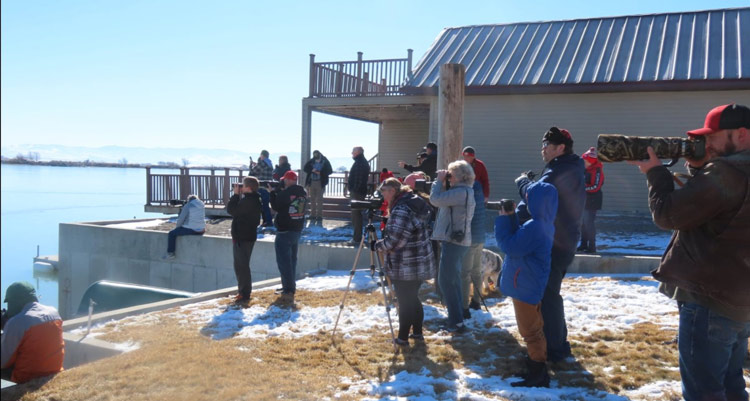 |
 |
 |
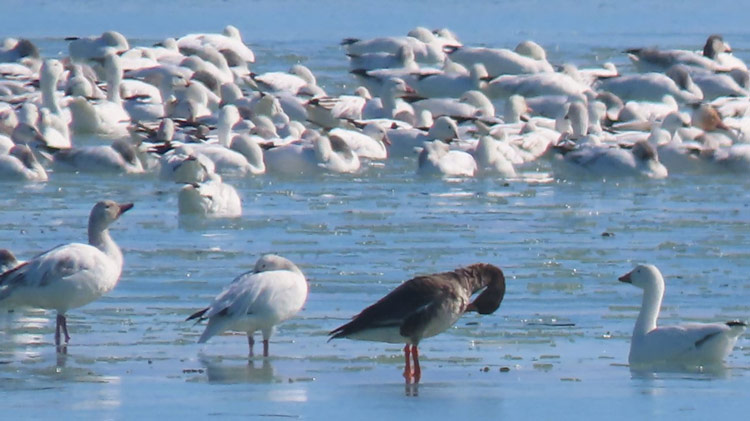
White-fronted Goose
|
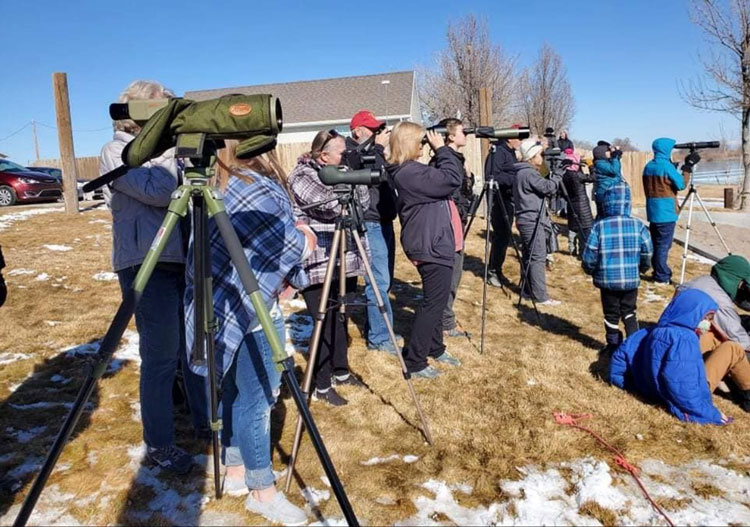 |
|

Tundra Swans, Northern Pintail, American Wigeon, Redhead and Mallards-Lyndell
|
|
We stopped by Ashton Farms Burger Barn...the wait was horrible
but the
hamburgers were good!
Till next time Delta Snowgoose Festival!
|
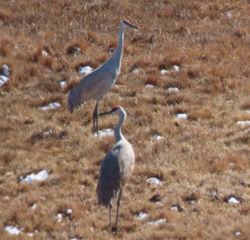
Sandhill Cranes-Lyndell
|
|

Snow Goose Festival - Gunnison Bend Reservoir, Delta, Utah
|
|
|

Farmington Bay |
|
Farmington Bay
WMA/ Eccles Education Center/Lee Kay Ponds Field Trip.
12 February 2022
by Suzi Holt
|
|
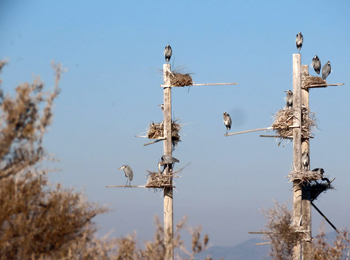
Great Blue Heron Rookery at Eccles Education Center |
|
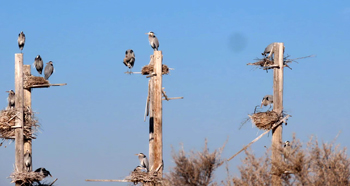
Great Blue Heron Rookery at Eccles Education Center |
|
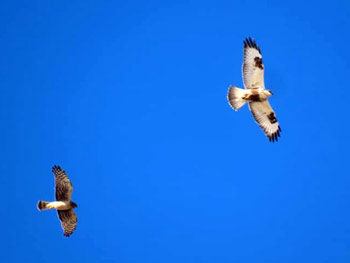
Northern Harrier/Rough-legged
Hawk-Eccles Education Center
|
We finished Davis and
Salt Lake counties!
I put 32 birders on our checklists but I
would dare say there could have been more. We began in the auditorium of the
Education Center with Billy Fenimore. We love Billy! He gave us a good
introduction about the center and the wetlands and also shared with us his
love for birds. After a quick photo op we headed out to walk the trails.
Some had stayed outside birding during the introduction and saw a American
Bittern that had been hanging out by the Heron Rookery for a few days.
If you haven't seen the Heron Rookery it is
worth the trip. There were atleast 24 Great Blue Herons!
We looked for the bittern again and looked for the White-throated Sparrow
with no luck. We had plenty of Song Sparrows though! There were also
Northern Shovelers, Canada Geese, American Coots, Pied -billed Grebes,
Gadwall, Green-winged Teal, Ring-billed Gulls and Red-winged
Blackbirds in the long pond. We walked the dike trail over to the
boardwalk. Toward the end of the dike we encountered lots of ice in the
ponds. But one pond had a small bit of open water and sitting on the ice
were a pair of beautiful Wood Ducks and some Mallards. A few
of us saw a Marsh Wren, heard White-crowned Sparrows. We had a
flyover of some Red-tailed Hawks, a Prarie Falcon, an
American Kestrel and lots of Northern Harrier's. We also saw a
couple European Starlings, a lone Common Raven and a bunch of
American Crows. We searched the trees for the Great-horned Owls with
no luck, but did see a couple Dark-eyed Juncos. The best thing we saw
was a "arial hawk dispute" a Northern Harrier was not having the
beautiful Rough-legged Hawk invade her territory!
|
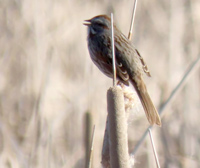
Song Sparrow-Eccles Education Center |
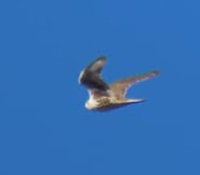
Prarie Falcon-Eccles Education Center |
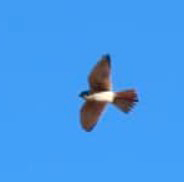
American Kestrel-Eccles Education Center
|
|

Northern Shovelers Great at Eccles Education Center |
|
|
|
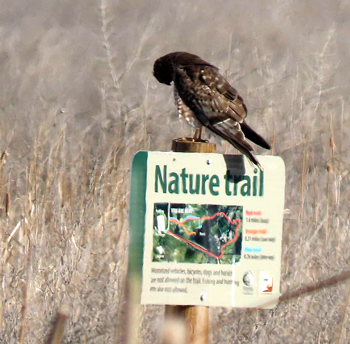 |
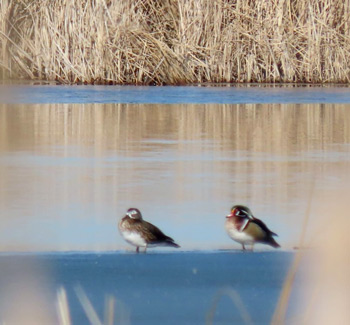 |
|
Northern Harrier-Eccles Education Center
|
Wood Ducks- Eccles Education Center
|
|
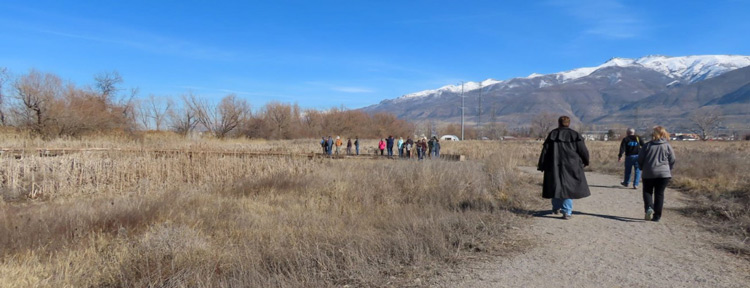
|
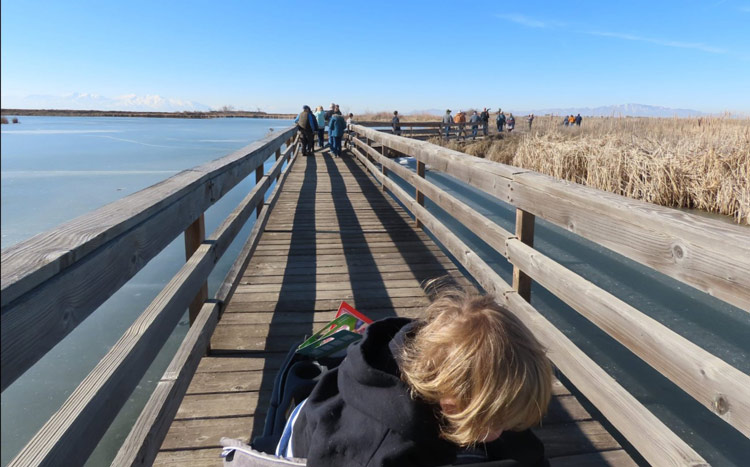
|
 |
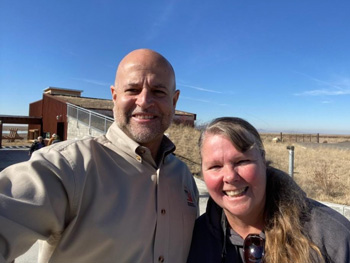 |

Cute Tatum Nox! |
|
We were sad that Kendall had something come up and he couldn't meet us out
on the Farmington Bay WMA auto route. We found lots of ducks in the first
pond. Northern Shoveler, Northern Pintail, Bufflehead, Mallard, Redhead,
Canvasback and Ring-necked Duck and lots of Canada Geese.
Down the road a little farther we had more Canvasbacks, a Marsh
Wren and a few Gadwall. We also saw some Red-tailed Hawks.
After we passed Egg Island we saw lots more ducks, and added Ruddy Duck
and Common Goldeneye to our list
|
|
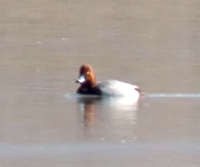
Redhead-Farmington Bay WMA |

Marsh Wren-Farmington Bay WMA |
|
|
|
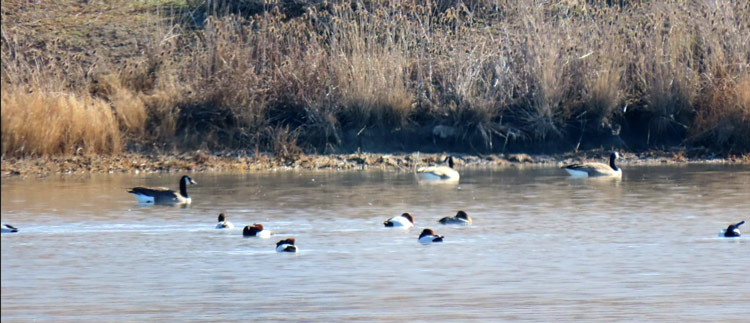
Canada Geese and Canvasback Farmington Bay WMA
|
|
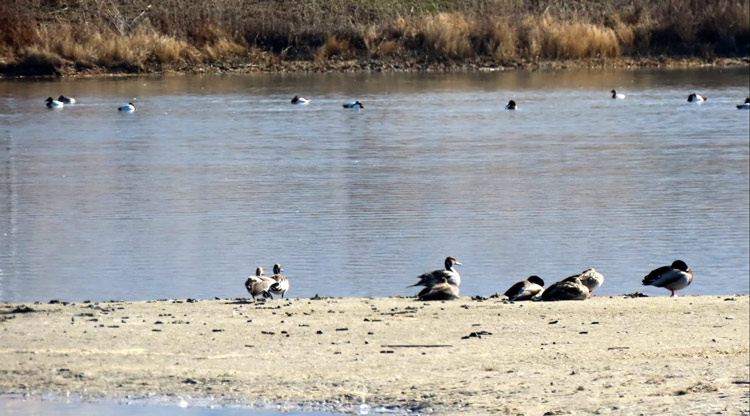
Northern Pintail and Mallards-Farmington Bay WMA
|
|
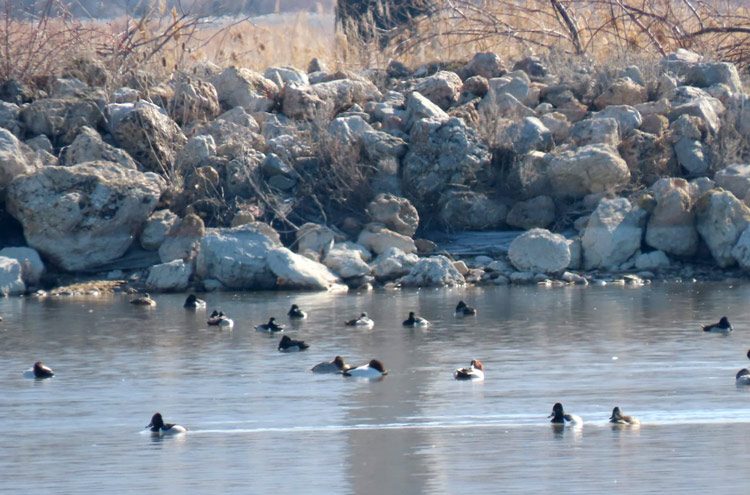
Ring-necked Ducks and Canvasback-Farmington Bay WMA
|
|

Northern Pintail, Lesser Scaup abd Bufflehead-Farmington Bay WMA
|
 |
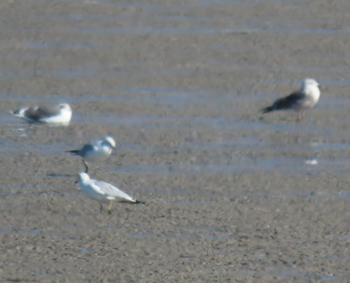 |
|
Lesser Black-backed Gulls,
Farmington Bay WMA
|
We finally got down to the gate and off to the left were
a couple beautiful Lesser Black-backed Gulls, lots of Ring-billed
Gulls and a few California Gulls. We also had Song Sparrows
and another Marsh Wren.
I imagine because there is not much ice and the warmer weather there just
weren't the huge numbers of gulls you typically see in the winter here. So
we decided to go to Lee Kay Ponds. . At the first bridge there were at least
sixty Pied-billed Grebes! Off in the distance we could see a huge
white line of Tundra Swans, a few were closer to the road and we got
some good looks at them.
|

|
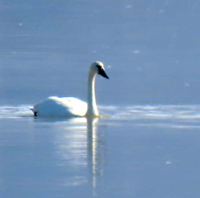 |
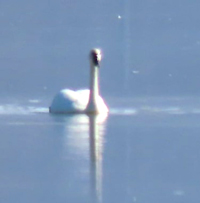 |
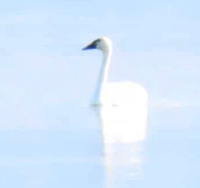 |
|
Tundra Swan-Farmington Bay WMA
|
|
At Lee Kay everyone needed 22 species but Amanda and I,
so we set out walking. The same gull situation was here as well. MIA! They
were all over at the dump eating lunch while being harassed by Common
Ravens.
|
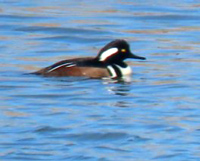
Hooded Merganser-Lee Kay ponds |
|
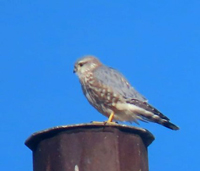
Merlin -Lee Kay ponds |
We found a few on a small island. We were excited to see a
Iceland/Thayer's Gull and a Herring Gull with a ton of
California Gulls and a Ring-billed Gull.
On one of the telephone poles along the road sat a Bald Eagle and a
couple poles down from it sat a Red-tailed Hawk, there were also a
couple Northern Harrier's flying around.
On another island we saw 3 Great Blue Herons, some Red-winged
Blackbirds, and Canada Geese.
As for ducks we saw lots of Hooded Mergansers, Common Mergansers,
Gadwall, Ring-necked Ducks, American Wigeon, Common Goldeneyes, Redheads and
Canvasback.
And don't forget the Pied-billed Grebe, American Coots and European
Starlings. On the way back to the cars we saw a few Brewer's
Blackbirds and a beautiful Merlin!
A big thank you to everyone who came! It was a beautiful day!
|
|
|
|
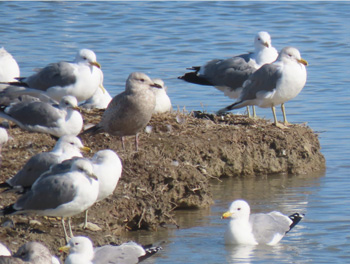
Iceland/Thayer's Gull-Lee Kay ponds |

Herring Gull -Lee Kay ponds |
|
|
|
|
|
Utah County Birders website
Utah County Birders Board Members
If you'd like to write an
article for the news newsletter...
send it to:
ucbirders@utahbirds.org
|
|
|
|
|
